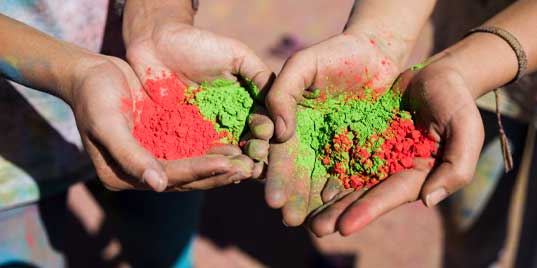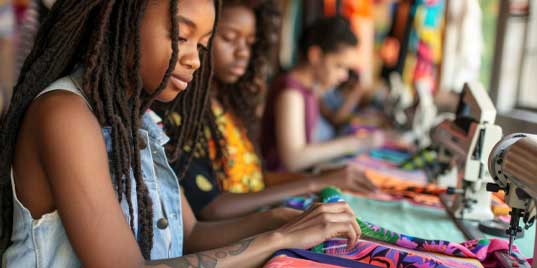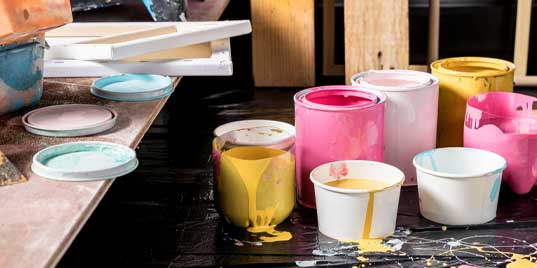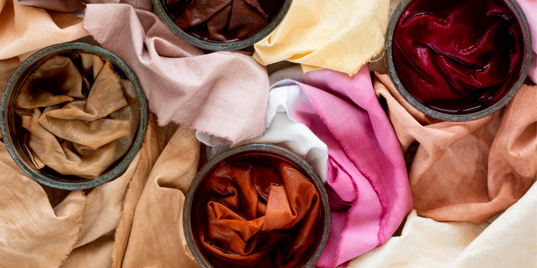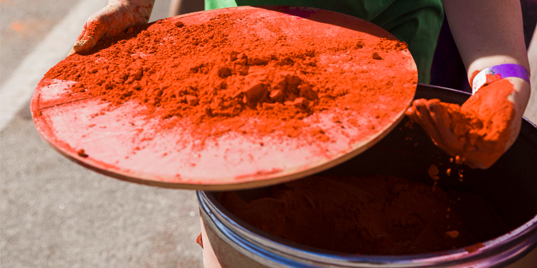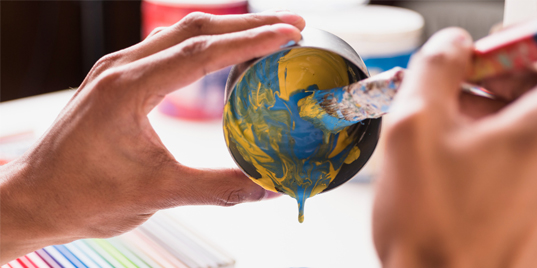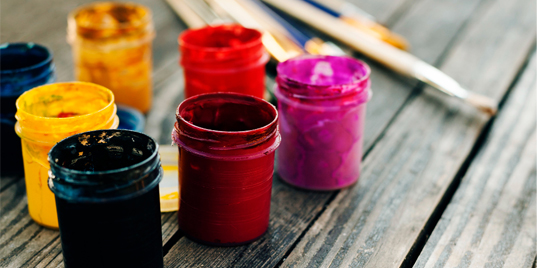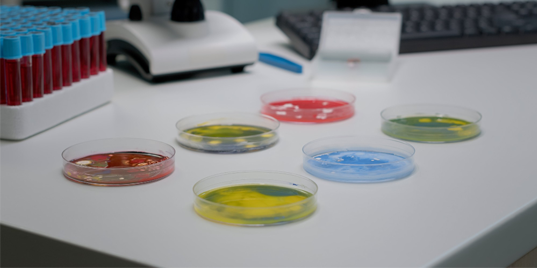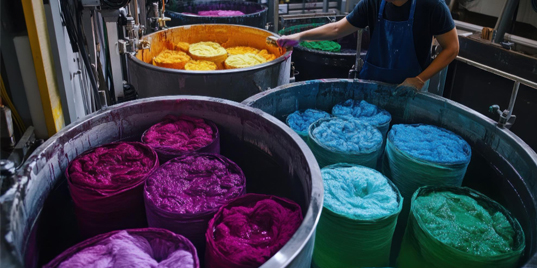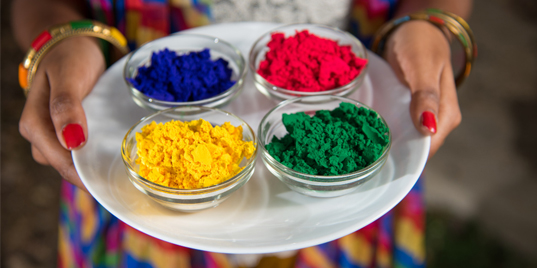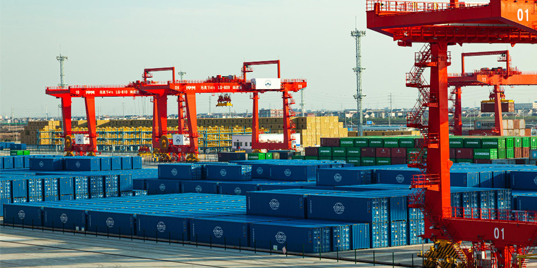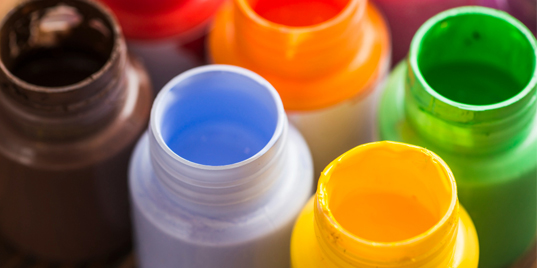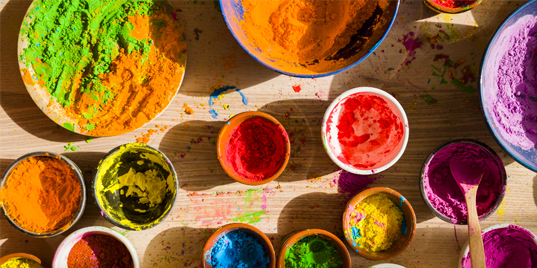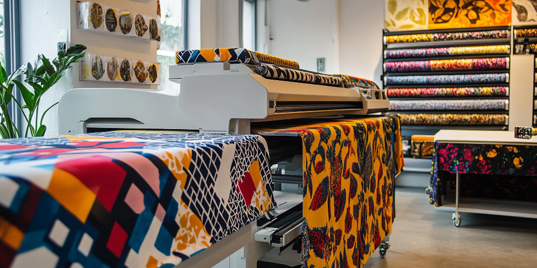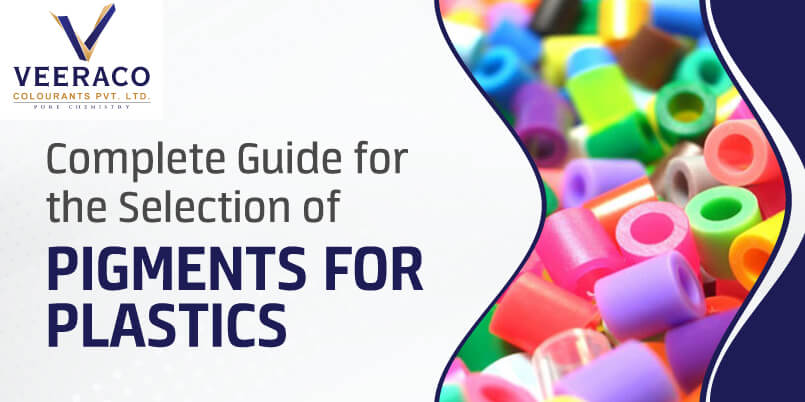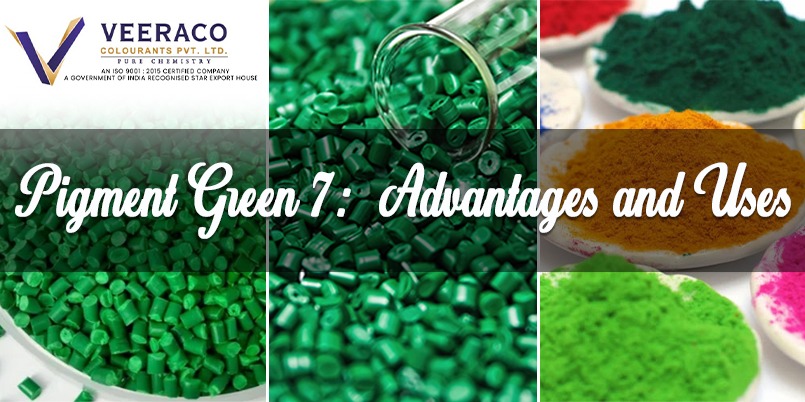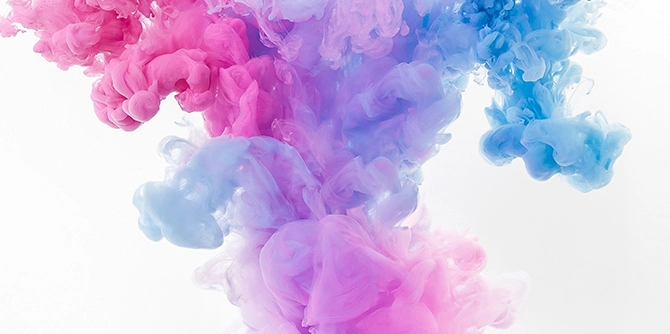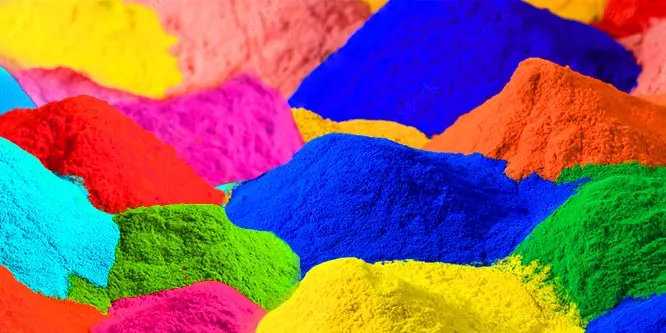
The Future of India's Dyes Industry: 10 Trends Shaping 2025-2035
- Admin
- Oct 10, 2025
The Future of India's Dyes Industry: 10 Trends Shaping 2025-2035
India's dyes and pigments industry stands at a transformative inflection point. Sustainability mandates, technological innovations, changing consumer preferences, and global market dynamics converge to reshape the industry landscape. Understanding emerging trends enables manufacturers, suppliers, and buyers to position advantageously for the future. Drawing on our 80+ years of industry experience and current market intelligence, this thought leadership piece explores ten major trends that will define India's dyes industry over the next decade.
Trend 1: Sustainability Becomes Non-Negotiable
From Optional to Essential
Environmental responsibility evolved from competitive differentiator to basic requirement. The next decade will see sustainability transition from "nice-to-have" to "must-have" across all market segments.
Regulatory Drivers
- Stricter water discharge standards with more regions mandating Zero Liquid Discharge.
- Expanded restricted substances lists (REACH, ZDHC, brand-specific).
- Carbon pricing mechanisms and emission limits.
- Extended producer responsibility for product end-of-life.
- Mandatory sustainability reporting and disclosure.
Market Drivers
- Consumer demand for sustainable products across all price points.
- Brand commitments to carbon neutrality and circular economy.
- Retailer sustainability scorecards affecting supplier selection.
- Investor ESG (Environmental, Social, Governance) criteria.
- Insurance and financing linked to environmental performance.
Technology Responses
- Zero Liquid Discharge (ZLD): Next-generation ZLD systems with lower energy consumption and resource recovery.
- Renewable Energy: Solar and wind scaling rapidly; green hydrogen emerging for high-temperature processes.
- Circular Economy: Dye recovery and recycling systems; textile-to-textile compatible chemistries and closed-loop manufacturing.
- Sustainable Chemistry: Bio-based feedstocks, enzymatic processes, and green chemistry principles embedded in R&D.
Manufacturers embracing sustainability will access premium markets; laggards face market access barriers, higher remediation costs, talent challenges, financing difficulties, and reputational risks.
Trend 2: Digital Transformation Accelerates
Industry 4.0 in Dyes Manufacturing
Digital technologies will revolutionize dyes manufacturing, distribution, and application — improving efficiency, reducing waste, and enabling faster customer response.
Smart Manufacturing
- IoT sensors monitoring real-time process parameters.
- AI-driven process optimization reducing waste and improving consistency.
- Predictive maintenance preventing equipment failures.
- Digital twins enabling virtual testing and optimization.
- Automated quality control with machine vision and spectroscopy.
Supply Chain Digitalization & Customer Interface
- Blockchain-based traceability from raw material to finished product.
- Digital marketplaces connecting manufacturers with global buyers.
- Virtual color libraries, AR/VR visualization, and AI-powered color matching.
- Automated inventory management, demand forecasting, and smart contracts.
India’s strong IT sector provides a foundation for rapid adoption, but investment in digital skills and infrastructure is essential to avoid a two-tier industry.
Trend 3: Bio-Based and Fermentation-Produced Dyes
Beyond Petroleum
Climate concerns and resource scarcity drive a shift from petroleum-based dyes to bio-based alternatives produced via fermentation and renewable feedstocks.
- Fermentation Technology: Engineered microbes producing dye molecules at scale with lower environmental impact.
- Plant-Based Feedstocks: Dye intermediates from agricultural waste and sustainable biomass.
- Algae and Fungi: Microalgae and fungal pigments offering sustainable specialty colors.
India’s pharmaceutical fermentation expertise and abundant biomass present significant opportunity. Timeline: commercial volumes by 2028–2030, cost parity for select colors by 2032–2035.
Trend 4: Regulatory Landscape Intensifies
Global Regulatory Convergence
Regulations will converge toward stricter global standards — expanding substance testing, effluent limits, and supply chain due diligence. Trade-related measures like carbon border adjustments and sustainability-linked trade rules will affect competitiveness.
Compliance Complexity & Strategic Response
- Proactive compliance by exceeding current standards will become a competitive advantage.
- Regulatory intelligence and product stewardship will be core capabilities.
- Industry collaboration can help shape pragmatic regulation while advancing environmental goals.
Trend 5: Shift from Volume to Value
Premium Product Focus
Commoditization pressures will push Indian manufacturers toward value-added, premium products — specialty dyes, multi-functional chemistries, and technical services that command higher margins.
- High-performance and multi-functional dyes (fastness, effects, added performance).
- Technical services: custom formulations, process optimization, and training.
- Sustainability-certified products commanding price premiums.
Trend 6: Consolidation and Market Restructuring
The industry will see consolidation through M&A, vertical integration, and strategic alliances. Larger players will scale, specialists will focus on niches, and mid-sized firms may be squeezed unless they specialize or consolidate.
- Mergers and acquisitions for scale, technology, and market access.
- Vertical integration into raw materials or forward application services.
- Strategic alliances for shared R&D and sustainability initiatives.
Trend 7: Customization and Personalization
Faster trend cycles and consumer desire for personalization drive demand for small-batch, rapid-turnaround dye solutions. Digital printing, automated dispensing, and AI-based color matching enable mass customization at scale.
- Smaller minimum order quantities and flexible packaging.
- Faster lead times and technical support for bespoke applications.
- Digital color services and virtual sampling for designers and brands.
Trend 8: Geographic Shifts and Nearshoring
Geopolitical shifts, supply-chain resilience, and nearshoring trends will create new manufacturing geographies. India stands to benefit from "China plus one" strategies and nearshoring initiatives, provided infrastructure and policy improvements continue.
- India positioned to serve Asia, Africa, Middle East, and Europe as buyers diversify sourcing.
- Regional trade agreements and infrastructure upgrades amplify opportunities.
Trend 9: Functional and Smart Dyes
Colors will increasingly deliver functional benefits beyond appearance — antimicrobial, UV-protective, moisture-managing, temperature-regulating, thermochromic, photochromic, and other smart responses will open new markets across healthcare, sports, automotive, and interiors.
Developing these products requires interdisciplinary R&D, rigorous testing, regulatory approvals for health claims, and premium pricing strategies.
Trend 10: Circular Economy and Dye Recycling
Movement from linear to circular models will accelerate: textile recycling, dye recovery from spent baths, biodegradable dyes, and product-as-a-service models gain traction as regulations, economics, and brand commitments converge on circularity.
- Dye recovery technologies improve economic viability.
- Design-for-recyclability and dye chemistries compatible with recycling processes become important.
- Extended producer responsibility and take-back programs gain regulatory support.
Cross-Cutting Theme: Talent and Skills
All trends depend on human capital — digital literacy, biotechnology expertise, sustainability specialists, regulatory talent, and innovation managers. Workforce development, university-industry collaboration, and attractive workplace cultures will be decisive competitive factors.
Strategic Imperatives for Indian Manufacturers
Successful manufacturers should prioritize strategic actions aligning with the trends above:
- Invest in Sustainability Leadership: ZLD, renewables, sustainable chemistry, and credible certifications.
- Embrace Digital Transformation: Industry 4.0, AI, digital customer platforms, and data analytics.
- Strengthen R&D and Innovation: Focus on bio-based, functional, and premium products; increase R&D investment and protect IP.
- Build Regulatory Excellence: Proactive compliance, regulatory monitoring, and product stewardship.
- Develop Premium Positioning: Move up the value chain with services, differentiation, and sustainability credentials.
- Pursue Strategic Growth: M&A, partnerships, and international expansion while managing succession planning.
- Enhance Customer Partnerships: Co-innovation, shared sustainability targets, and long-term collaboration.
Risks and Uncertainties
Future predictions carry uncertainties including geopolitical risks, disruptive technologies, economic volatility, regulatory surprises, climate events, and potential pandemic recurrences. Resilient strategies prioritize diversification, flexibility, financial strength, and scenario planning.
Opportunities for Visionary Companies
Opportunities abound: market growth from rising global consumption, sustainability premiums, technological advances in digital and biotech, global partnerships, serving emerging markets, and import substitution in specialty areas. Visionary companies investing strategically can achieve exceptional growth and profitability.
Veeraco's Vision for the Future
At Veeraco Colourants, we view the future with optimism and commitment. Our 80+ years foundation provides stability while our innovation culture drives evolution.
Our Strategic Priorities
- Sustainability Leadership: Achieving carbon neutrality by 2030, implementing closed-loop manufacturing, and expanding sustainable product portfolio to 50%+ by 2028.
- Digital Excellence: Completing smart manufacturing implementation by 2026 and launching a digital customer platform in 2025.
- Innovation Focus: Doubling R&D investment by 2027, developing commercial bio-based dyes by 2029, and launching functional dyes in 2026.
- Global Expansion: Growing export share to 40% by 2030, establishing technical service centers, and pursuing strategic partnerships.
- Talent Development: Building digital and sustainability capabilities and developing next-generation leadership.
Partnering for Success
We view our customers as partners in navigating the future. Our commitments include transparency about our journey and challenges, collaboration on innovation and sustainability, long-term relationships versus short-term transactions, and shared success and mutual growth.
Conclusion: Embracing Transformation
India's dyes industry stands at a transformation threshold. The next decade will separate leaders from followers—those embracing change versus those resisting. Trends such as sustainability, digitalization, bio-based chemistry, regulatory intensity, premiumization, consolidation, customization, nearshoring, functionality, and circularity will fundamentally reshape the competitive landscape.
Success requires vision, investment, execution, and adaptation. Indian dyes manufacturers possess strong foundations—technical expertise, cost competitiveness, entrepreneurial spirit, and growing sophistication. By building on strengths and addressing weaknesses, Indian industry can become a global sustainability and innovation leader, not just a cost competitor.
Contact Veeraco to discuss how we can partner in navigating industry transformation and capturing future opportunities together.

